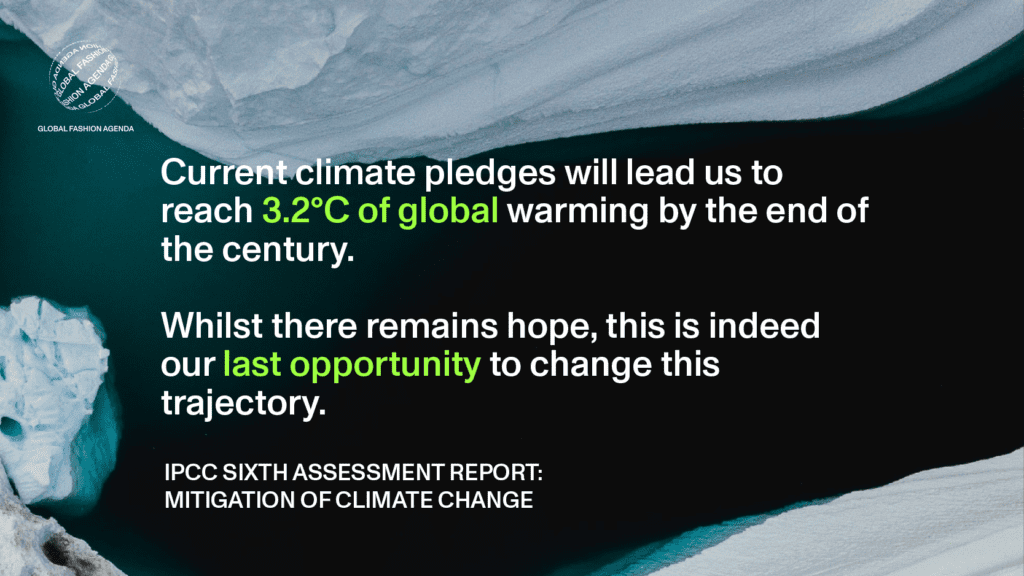IPCC Report Outlines the Narrow Window for Change


Delivering the final installment of the latest IPCC report, Secretary-General of the United Nations, António Guterres, announced: “The jury has reached a verdict and it is damming… we are on a fast track to climate disaster.” It is clear that our planet – the result of a delicately webbed interplay of various factors over 4.5 billion years – now faces the stark repercussions of humanity.
With the IPCC Reports taking approximately seven years and thousands of scientists to compile, this may be the final warning before we find ourselves on a direct and decisive route to irreversible and catastrophic climate collapse.
This is of course not the first time the alarm has been raised, in fact, it has been over three decades since the IPCC began official meetings between governments and scientists to discuss the need to reduce greenhouse gas emissions. So far, these warnings have largely gone unheeded.
IPCC Working Group III Co-Chair, Jim Skea’s words – “It’s now or never” – have reverberated around the world and reiterated the blunt warning that we all feared. Whilst there remains hope, this is indeed our last window for change.
The fashion industry cannot afford to be complacent in the face of these warnings. Our Fashion on Climatereport projects that if the industry does not accelerate its response to climate change, by 2030 it will produce around twice the volume of greenhouse gas emissions required to align with the Paris Agreement global warming pathways by 2050.
– Current climate pledges would render it impossible to limit warming to the 1.5°C pathway detailed in the Paris Agreement (essentially the level above which many of the results of climate change will become irreversible) and rather lead us on the trajectory to reach 3.2°C of warming by the end of the century. It is therefore very apparent that we require major emission cuts across all sectors, fashion included.
– On top of drastic emission reductions via the phasing out of fossil fuels, we must look towards renewable energy and energy efficiency.
– Cutting fossil fuel emissions is not enough and removing CO2 already in the atmosphere will be “unavoidable”. Accordingly, there should be a push towards progressing carbon capture technologies.
– Land use is outlined in the report, highlighting that the fashion industry must focus on adopting more regenerative agriculture practices, halting deforestation, carefully considering material choices and restoring biodiversity.
– While current investment is far too low, the true cost of shifting to a low carbon world will be minimal and equivalent to just a small percentage of global GDP by 2050. The economic benefits of climate action will outweigh the costs, though this is not to underestimate the immense effort it will take from governments, businesses and individuals.
– There is an unequal distribution of emissions, specifically: “The 10% of households with the highest per capita emissions contribute a disproportionately large share of global household GHG emissions”. This is indicative of who should be taking responsibility. Specific to the fashion industry, the European Environment Agency’s recent Textile Briefing indicated: “80% of environmental impacts generated by Europe’s textile consumption take place outside Europe.” Brands must work to support their suppliers in their sustainability efforts beyond their own region.
The resounding takeaway is that unless we drastically cut emissions, our more specific and focused efforts, say around coral reefs, will be futile. According to the report we do, encouragingly, have the means to place our planet on a more positive trajectory.
Eco-anxiety can be stifling but we must remain optimistic and unite to create a better future.
The fashion industry must increase its efforts and the report’s authors are not complacent about the need for systemic change, but for the first time, the report covers the “demand-side”, which encompasses everything from diets to consumption patterns. These measures can reduce global GHG emissions in end-use sectors by 40-70% by 2050. As citizens, we must now re-evaluate our consumption habits and use our purchasing powers to send a strong signal to the fashion industry.
Our Fashion on Climate report suggests that sustainable consumer behaviours have the power to influence 21% of fashion’s carbon emissions.
Read more about the balance of responsibility in the fashion industry here.
It is empowering to know that everyone can be part of the solution and they can start participating in the climate movement today. It is crucial that sustainability itself is sustainable – meaning that it is accessible, enjoyable and enriching. And it can be. From rental to resale – sustainable fashion can remain both intrinsically creative and joyful.
Fundamentally, the report signals that we all must act rapidly and meaningfully. We can no longer accept hollow aspirational platitudes centred around some abstract future. The climate crisis is upon us at this very moment, implicating some of the most vulnerable people across our globe at an accelerated rate. Let us not draw a line under this report but rather let this prove to be an inflection point for our industry and our planet.
Read our takeaways from the IPCC WGI report here and the WGII report here.